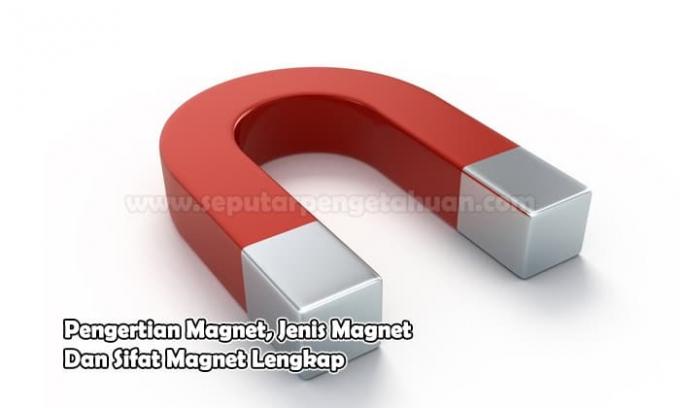Understanding Magnets, Types and Properties of Magnets (Complete Discussion)
Understanding Magnets, Types and Properties of Magnets (Complete Discussion) - On this occasion we will discuss about the meaning of magnets, types of magnets and also the nature of magnets. The word magnet itself is certainly familiar to many people. But sometimes we don't know the true meaning of magnetism.
For that we will start a discussion about magnets, and hopefully this discussion can help readers to get information about magnets. In order to be clearer in knowing magnets, let's start the discussion below.
list of contents
-
Understanding Magnets, Types and Properties of Magnets (Complete Discussion)
- Understanding Magnets
- Magnet Type
- Magnetic Properties
- How to Make Magnets
- Share this:
- Related posts:
Understanding Magnets, Types and Properties of Magnets (Complete Discussion)
Let's discuss the meaning of magnet first carefully.
Understanding Magnets
Magnets are objects that can cause symptoms of force, either attractive or repulsive to certain types of metal, such as iron, steel and others. Not only that, a magnet is also defined as an object that can attract other objects that are also made of metal, such as iron, steel, cobalt and nickel.
Magnets also have a strong part of the attraction which is also called the magnetic pole. The magnetic pole consists of a north pole (U) and a south pole (S). A magnet consists of elementary magnets that are arranged in an orderly and directed manner. If there are two magnets then the same poles are brought close to each other, they will repel each other.
But if the opposite poles are brought closer, they will attract each other. While the part that is around the magnet which is also still influenced by the magnetic force is also called the magnetic field.
Magnet Type
Magnets have several types, what are the types of magnets? We will discuss it below in order to find out what types of magnets are.
- artificial
- natural
- permanent
- not fixed
Magnetic Properties
Magnets themselves have several kinds of properties, to be able to find out what are the properties possessed by magnets, let's just continue the following discussion.
- Magnets can attract certain objects
- Has two poles
- The magnetic field which then forms a magnetic force
- The poles of the same magnet will repel each other but if it is the other way around then the magnets will attract each other

How to Make Magnets
To be able to make a magnet there is a different way, how do you make a magnet? for that we just find out how to make magnets below.
1. Rubbing in the direction of the magnet
For example, iron that previously did not have a magnetic field can be used as a magnet by rubbing it in the same direction as the tip of a permanent magnet.
2. By Using Direct Current Electricity
For example, iron will be used as a magnet by using a direct current to flow and then the iron is wrapped around a wire and then connected to a battery. Which will become an elementary magnet in the iron and will be influenced by the DC electric current generated by the battery and then it will become an elementary magnet that is in the same direction and order.
3. By Using Magnetic Induction
For example, iron can be used as a magnet by induction. By using iron placed close to a permanent magnet, it will cause the existing elementary magnets on iron is influenced by a permanent magnet which can make the elementary magnets regular and point to one direction.
That's the explanation we can give about Understanding Magnets, Types and Properties of Magnets (Complete Discussion), hopefully with the article that we made can help readers to gain knowledge from this article, hopefully useful.
Read also:
- Wave Period: Definition, Frequency, Velocity, Magnetic Field and Oersted's Experiment
- Electromagnetic Waves: Definition, Properties, Formulas, Benefits, Spectrum
- Sequence of Electromagnetic Waves: Principles, Properties, Utilization and Maxwell's Theory
- Definition of Diamagnetic, Paramagnetic and Ferromagnetic (Complete)
- Transformers: Definition, Functions, Types, Parts, Working Principles, Weaknesses and Winding Formulas
